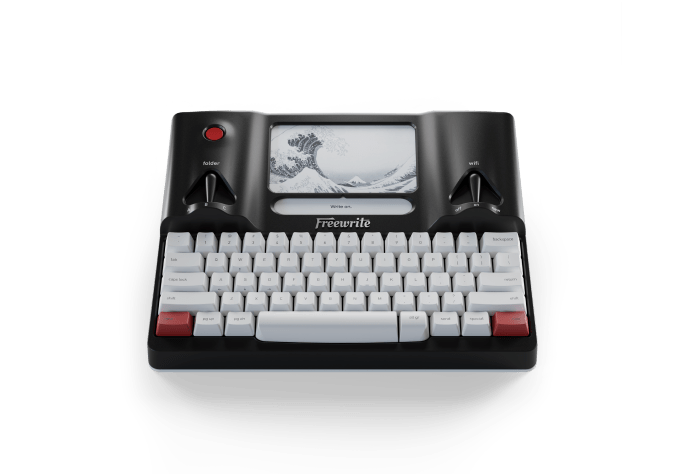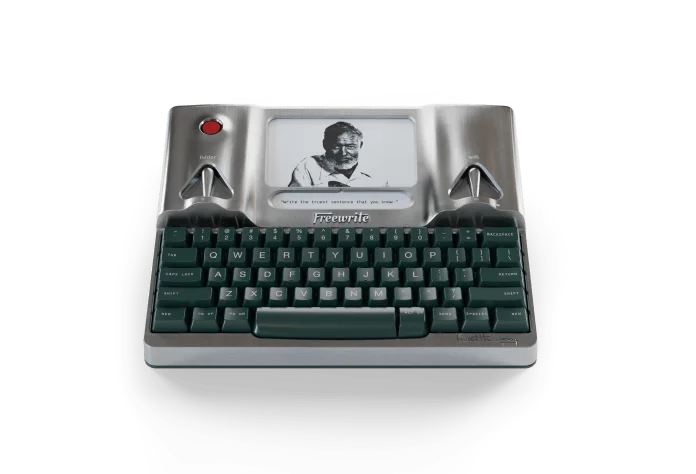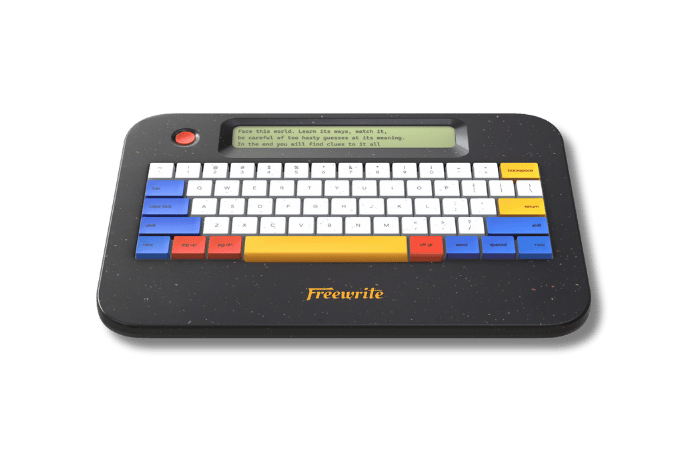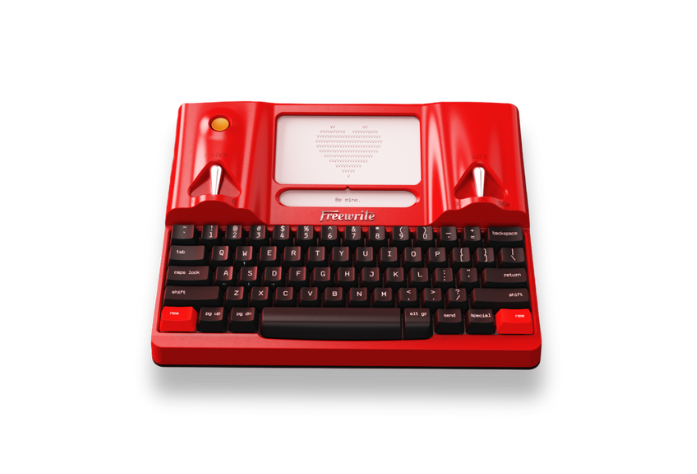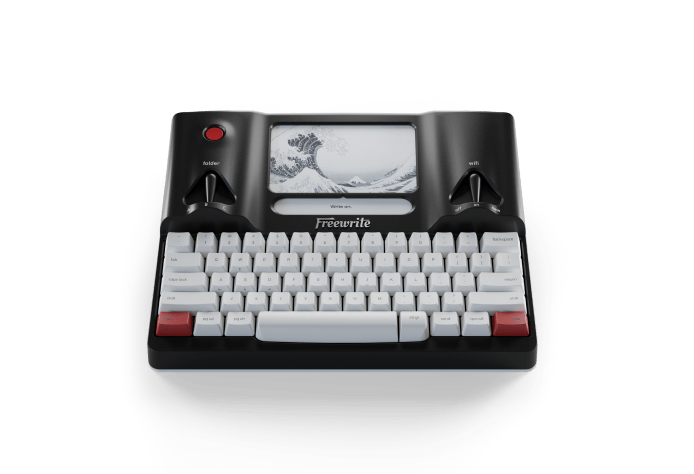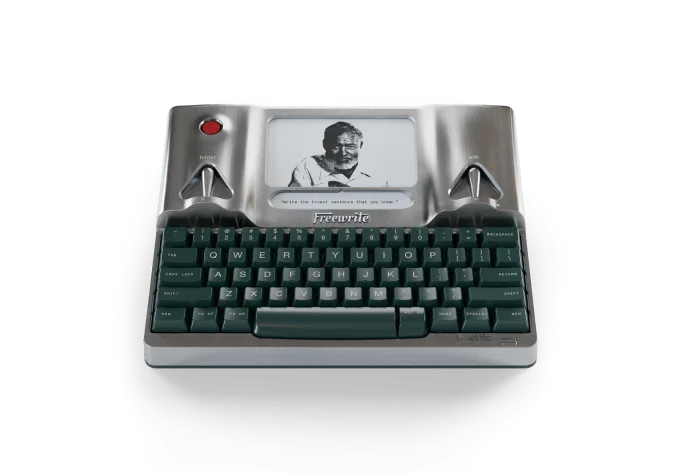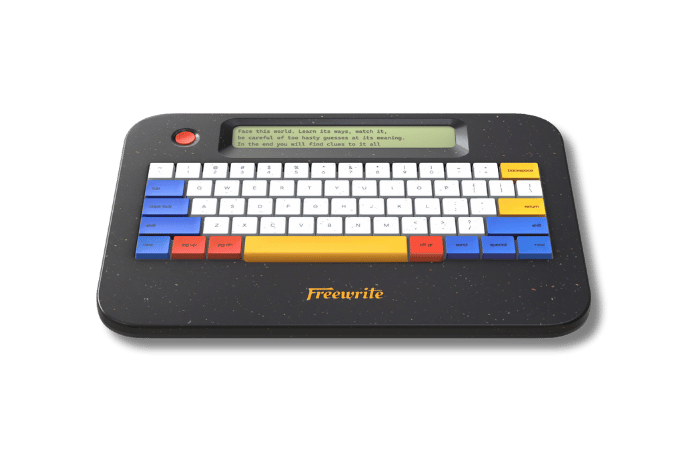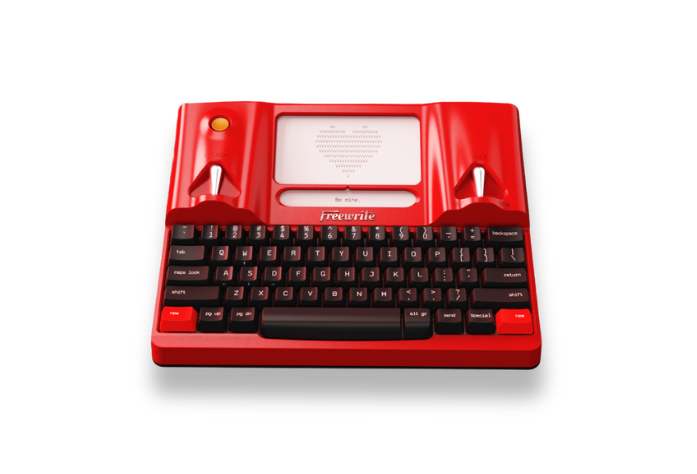If you’ve ever seen the term "NaNoWriMo" floating around and wondered what it actually means, you're not alone! NaNoWriMo stands for National Novel Writing Month, an annual event where writers challenge themselves to write 50,000 words in just 30 days. But the name can be a bit tricky if you're not familiar with it. Let's break down what NaNoWriMo really stands for and why it’s become such a big deal in the writing community!
What Does NaNoWriMo Mean? Unpacking the Acronym
NaNoWriMo stands for National Novel Writing Month, a creative challenge that inspired writers worldwide to draft a 50,000-word novel every November. Launched in 1999, it became a cultural touchstone for aspiring authors until its closure in 2025, blending ambition with community support to make novel-writing accessible to all.
Defining the Acronym
The term "National Novel Writing Month" breaks down into three key parts. "National" reflects its U.S. origins, though it quickly grew into a global event with participants in over 100 countries by 2015. "Novel" emphasizes the challenge’s focus on writing a new work of fiction, aiming for 50,000 words - roughly the length of a short novel like The Great Gatsby (47,094 words). "Writing Month" highlights the 30-day sprint from November 1 at 12:00 a.m. to November 30 at 11:59:59 p.m., local time, where writers averaged 1,667 words daily. This structure, set by founder Chris Baty, made NaNoWriMo a focused yet flexible challenge, accommodating writers across time zones.
The Purpose Behind the Name
NaNoWriMo’s name captures its mission: to democratize novel-writing by prioritizing quantity over quality. Baty’s 2003 book No Plot? No Problem! outlined the philosophy - silence your inner editor and write a rough draft in 30 days. The 50,000-word goal was ambitious but achievable, encouraging participants to build momentum rather than perfect their prose. Writers could plan outlines or research beforehand, but no prose written before November 1 counted. This approach led to nearly 400 traditionally published novels, including Water for Elephants and The Night Circus, showcasing the power of a month-long creative push.
How It Worked
Participants signed up on nanowrimo.org in October, creating profiles to announce their novels and track word counts. The website’s progress graphs and forums kept writers motivated, while Municipal Liaisons organized local write-ins to foster collaboration. In 2022, 413,295 writers joined, supported by pep talks from authors like Neil Gaiman. Those hitting 50,000 words earned badges, certificates, and prizes like free paperback proofs from sponsors such as CreateSpace (2007–2015). The name NaNoWriMo became synonymous with this communal effort, uniting diverse writers in a shared goal.
Lasting Impact
Even after NaNoWriMo’s closure in April 2025 due to financial struggles and community disputes, the acronym remains a symbol of creative discipline. Its final November in 2024 saw writers worldwide embrace the challenge one last time, proving the name’s enduring appeal. Writers continue to adopt the 50,000-word goal for personal challenges, using tools like Freewrite devices to stay focused, ensuring NaNoWriMo’s legacy lives on.
The Origins of NaNoWriMo: How It Got Its Name
NaNoWriMo, short for National Novel Writing Month, was born in 1999 when Chris Baty launched a bold experiment in San Francisco. The name reflected its goal of dedicating a month to writing a novel, starting small but growing into a global movement by its 2025 closure.
In July 1999, Baty and 21 friends aimed to write 50,000-word novels in 30 days, naming the challenge National Novel Writing Month to capture its focus on novel-writing. The summer timing didn’t stick, so in 2000, Baty moved it to November, keeping the name for its catchy appeal and cozy, writing-friendly vibe. That year, 140 writers joined, including international participants. By 2001, media coverage and a new website boosted participation to 5,000, cementing the name’s place in literary culture.
-
1999 Launch: Baty named it National Novel Writing Month for a 30-day novel-writing sprint.
-
November Shift: Moved to November in 2000, retaining the name for its appeal.
-
Early Growth: Grew from 21 participants in 1999 to 5,000 by 2001 with media buzz.
-
Global Reach: The challenge grew to hundreds of thousands of participants by the mid-2010s, with over 413,000 writers joining globally in 2022.
NaNoWriMo’s Community: The “National” and Global Reach
The “National” in NaNoWriMo’s name nods to its U.S. roots, but its community quickly became a global force, connecting writers through local events and online platforms. This blend of local and international engagement defined its impact until its 2025 closure.
Starting in San Francisco, NaNoWriMo expanded worldwide by 2000, with 431,626 participants across 100+ countries by 2015. Municipal Liaisons, volunteer organizers, hosted write-ins in libraries and cafes, while kickoff parties and “Thank God It’s Over” celebrations bookended November. Online, nanowrimo.org’s forums and virtual write-ins fostered connection, with 413,295 writers joining in 2022. The name’s “National” became symbolic, reflecting a united global community chasing a shared 50,000-word goal.
-
Global Growth: From U.S.-based in 1999 to 431,626 participants worldwide by 2015.
-
Local Events: Write-ins and parties hosted by Municipal Liaisons in 100+ countries.
-
Online Hub: Forums and virtual sprints on nanowrimo.org connected writers globally.
-
Community Stats: 413,295 participants in 2022, supported by author pep talks.
Young Writers Program: NaNoWriMo for Kids and Teens
The Young Writers Program (YWP), launched in 2004, brought the spirit of National Novel Writing Month (NaNoWriMo) to students under 18, empowering kids and teens to embrace creative writing through a flexible, youth-friendly version of the November challenge. By adapting NaNoWriMo’s 50,000-word goal to suit younger writers, YWP made novel-writing accessible and fun, fostering a love for storytelling that reached over 100,000 students annually at its peak until NaNoWriMo’s closure in 2025.
Tailored Goals for Young Writers
Unlike NaNoWriMo’s fixed 50,000-word target, YWP allowed participants to set their own word count goals, ranging from 1,000 to 50,000 words or more, based on age, experience, or ambition. This flexibility ensured that a 10-year-old could aim for 5,000 words while a high school senior might tackle the full 50,000. Writers joined the challenge from November 1 at 12:00 a.m. to November 30 at 11:59:59 p.m., local time, aligning with the main event’s schedule. The program’s adaptability made it a hit in classrooms, where teachers often set collective goals or guided students to choose targets that felt achievable yet challenging.
Classroom Integration and Resources
YWP was designed with educators in mind, offering free curriculum materials to integrate NaNoWriMo into schools, homeschool groups, and libraries. Teachers accessed lesson plans, workbooks, and posters on ywp.nanowrimo.org, covering plot development, character creation, and storytelling basics. These resources, funded by donations and sponsors like Amazon Literary Partnership, helped over 100,000 students participate yearly by 2015. Students registered on the YWP website, which featured a kid-safe interface with progress trackers and badges to celebrate milestones. Educators could monitor class progress, making YWP a powerful tool for teaching creative writing and building confidence.
Building a Youth Community
YWP fostered a vibrant community through youth-specific forums on ywp.nanowrimo.org, where students shared ideas, asked for plot advice, and cheered each other on. While most events were virtual, some Municipal Liaisons organized youth-focused write-ins in local libraries or schools, creating safe spaces for group writing. Pep talks from young adult authors, like Veronica Roth, inspired participants, and virtual “cabins” let teens connect with peers globally. This sense of belonging helped students feel part of NaNoWriMo’s broader mission, with many returning year after year to refine their skills and tackle bigger goals.
Impact and Legacy
The Young Writers Program transformed how kids and teens approached writing, producing countless stories and sparking lifelong passions. By 2022, thousands of classrooms worldwide used YWP, with students contributing to NaNoWriMo’s 413,295 participants. Even after NaNoWriMo’s closure in April 2025 due to financial and community challenges, YWP’s model of flexible, encouraging creative writing continues to inspire educators and young writers. Tools like Freewrite devices or platforms like Scrivener can help students carry forward YWP’s spirit, setting their own word count goals for personal writing sprints.
Camp NaNoWriMo: Extending the NaNoWriMo Name Year-Round
Camp NaNoWriMo, launched in 2011, extended the NaNoWriMo name beyond November, offering writers flexible, year-round writing challenges in April and July. With a relaxed, summer camp vibe, it let participants set custom goals, making it a versatile complement to the main event until NaNoWriMo’s 2025 closure.
Running from the 1st to the 30th or 31st, local time, Camp NaNoWriMo allowed writers to choose word counts (starting at a few thousand), hours, or pages for projects like novels, scripts, or essays. Participants joined virtual “cabins” on nanowrimo.org to collaborate with small groups, sharing progress via message boards. After its standalone site closed, Camp merged into the main platform, remaining free with registration opening weeks before each session. Thousands joined in 2022, drawn to its creative freedom.
-
Custom Goals: Set word counts, hours, or pages for any writing project.
-
Session Timing: Full months of April and July, from the 1st to 30th/31st, local time.
-
Virtual Cabins: Connect with friends or random groups for support.
-
Free Access: No cost, with sign-ups a few weeks before sessions.
Boosting NaNoWriMo Productivity
For NaNoWriMo participants aiming to write 50,000 words in November, staying focused is essential.Freewrite devices, offered by Astrohaus through getfreewrite.com, are purpose-built to eliminate distractions like social media, email, and apps, helping writers produce up to 2-3 times more words per hour. Featuring E Ink or LCD screens to reduce eye strain, tactile keyboards for comfortable typing, and cloud syncing to services like Postbox, Google Drive, Dropbox, or Evernote, Freewrite ensures drafts are secure while keeping the focus on storytelling. Since 2016, over 611 million words have been written on Freewrite devices, making them a trusted tool for NaNoWriMo’s intense writing sprint. Below, we explore three devices ideal for hitting your word count goals.

Freewrite Smart Typewriter (3rd Gen)
The Freewrite Smart Typewriter is a focused, distraction-free device designed to improve the writing experience. It features an E Ink™ display with a frontlight, making it easy to read in any lighting conditions, whether it's bright sunlight or a dim room. The full-size mechanical keyboard offers a smooth, tactile typing experience, and the durable aluminum body ensures that the device can handle daily use. With a long-lasting battery, the Smart Typewriter supports extended writing sessions. It also automatically syncs drafts to the cloud, allowing easy access from other devices.
Key Advantages:
-
Helps users stay focused on writing without distractions from apps or notifications
-
Built with a durable design that can withstand everyday use
-
The E Ink™ screen is easy on the eyes and works well in all lighting
-
Automatically saves and backs up drafts to the cloud, so nothing is lost
-
The mechanical keyboard makes typing a more enjoyable experience, encouraging users to write more

Freewrite Traveler
The Freewrite Traveler is a portable, distraction-free writing device designed for those who want to write on the go. It features a lightweight design, weighing only 1.6 pounds, making it easy to carry everywhere. The E Ink™ display offers an eye-friendly reading experience, with no glare or harsh backlight, perfect for long writing sessions. The full-size scissor-switch keyboard is smooth and responsive, providing a comfortable typing experience. With automatic cloud syncing, your drafts are safely backed up and accessible from any device. The Traveler is built to handle all your writing needs, whether at home or on an adventure. This device works great for both kids and adults.
Key Advantages:
-
Lightweight and portable, perfect for writing anywhere without the bulk of a laptop
-
The E Ink™ display is gentle on the eyes and works well even in bright sunlight
-
The scissor-switch keyboard offers a smooth, comfortable typing experience for long sessions
-
Automatically saves your work to the cloud, so you never have to worry about losing your drafts
-
Long battery life ensures that you can keep writing without interruptions, even on extended trips

Alpha Raven Black with Backlight
The Alpha Raven Black with Backlight is a portable writing device that’s perfect for anyone who needs to write on the go. Weighing just 1.6 pounds, it's lightweight and easy to carry anywhere. The backlight is warm and adjustable, making it perfect for writing day or night. With its Kailh Choc V2 low-profile mechanical keyboard, typing is comfortable and smooth. The device saves your work continuously, so you never have to worry about losing your progress. Plus, all your drafts are backed up automatically to the cloud, making it easy to access your work from any device. Both kids and adults will find this device useful.
Key Advantages:
-
Lightweight and portable, ideal for writing during commutes or while traveling
-
The adjustable backlight ensures that you can write in any lighting condition, day or night
-
The keyboard provides a smooth and comfortable typing experience, reducing finger fatigue
-
Continuous saving and automatic cloud syncing keep your drafts secure and easily accessible
-
The long battery life (up to 100 hours) means you can write for days without needing to recharge

Hemingwrite Signature Edition
TheHemingwrite Signature Edition, developed in collaboration with the Ernest Hemingway estate, is designed for writers seeking simplicity and focus. This premium device features a raw aluminum body that develops a unique patina over time, making each one a personalized piece. It comes with a green keycap keyboard, offering a tactile, satisfying typing experience. The Hemingwrite is built to keep you in your writing flow, free from distractions, with automatic cloud syncing to save your drafts. While ideal for adults, it can also be a great tool for kids who are developing their writing skills.
Key Advantages:
-
The unique raw aluminum design develops a personal patina, making each device one-of-a-kind
-
The green keycap keyboard provides a comfortable, tactile typing experience that enhances long writing sessions
-
Automatic cloud syncing ensures your drafts are safely backed up and accessible from any device
-
The minimalist design and focus on writing flow help users stay distraction-free
-
Comes with a premium leather attaché case for stylish protection and easy transport
Conclusion
NaNoWriMo, standing for National Novel Writing Month, was a transformative writing challenge that united millions to draft 50,000-word novels each November, fostering creativity and community from its 1999 launch until its closure in 2025. The acronym captured its essence: a “national” event that grew global, a focus on “novel writing” through ambitious drafts, and a “month” of dedicated effort. From 21 writers in San Francisco to over 431,000 worldwide by 2015, NaNoWriMo’s name became synonymous with literary ambition, producing nearly 400 published novels like The Night Circus. The Young Writers Program and Camp NaNoWriMo extended its spirit to kids, teens, and year-round challenges, while tools like Freewrite devices supported focused drafting. Though NaNoWriMo ended due to financial and community challenges, its legacy inspires writers to set bold goals and build their own writing communities.
Frequently Asked Questions
What does NaNoWriMo stand for?
NaNoWriMo stands for National Novel Writing Month, a 30-day challenge held every November where writers aimed to draft a 50,000-word novel, averaging 1,667 words daily, from the 1st at 12:00 a.m. to the 30th at 11:59:59 p.m., local time.
Why is it called “National” if NaNoWriMo was global?
The “National” in NaNoWriMo reflects its 1999 U.S. origins in San Francisco, but it became global by 2000, with 431,626 participants across 100+ countries by 2015. The name stuck for its catchy appeal, symbolizing a united writing community.
How did the Young Writers Program use the NaNoWriMo name?
The Young Writers Program, launched in 2004, adapted NaNoWriMo for students under 18, using the same November timeline but with flexible word count goals (1,000 to 50,000+ words). It reached over 100,000 students yearly through classrooms and ywp.nanowrimo.org.
What was Camp NaNoWriMo, and how did it relate to the name?
Camp NaNoWriMo, started in 2011, extended the NaNoWriMo name to April and July sessions, offering customizable goals (words, hours, pages). It shared the “Novel Writing Month” spirit, with a relaxed vibe and virtual “cabins” for collaboration.

